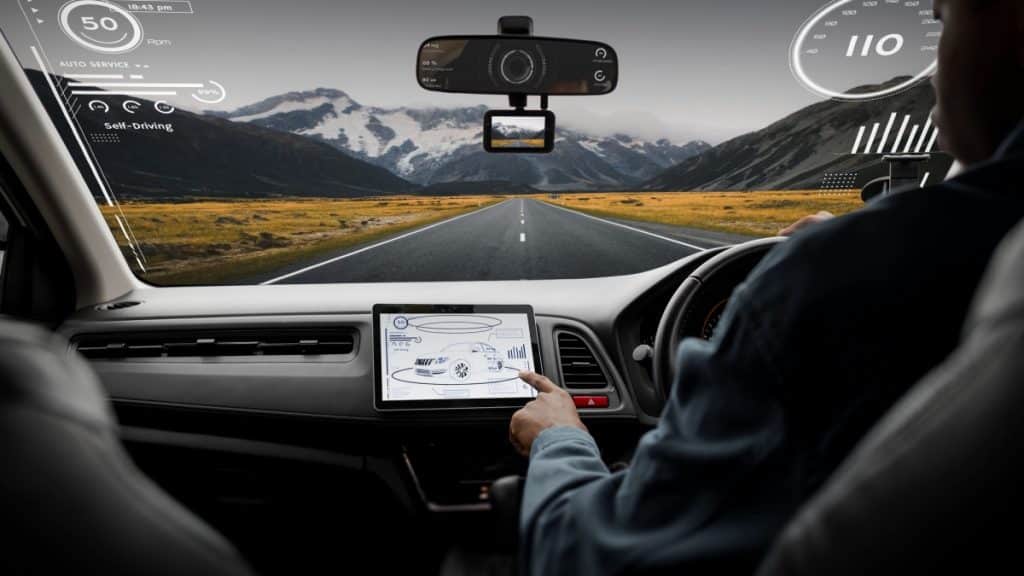In the times where technological breakthroughs are changing every sphere of our lives, automobile industry proves to be one among those that fall at the helm of innovation. The use of advanced technologies has revolutionized to a great measure the manner in which we drive, thereby improving safety, comfort and efficiency.
Modern cars are equipped with numerous impressive technologies from autonomous features to connectivity options. Here, we go into details about the three latest and hottest technologies that continue to generate quite some buzz in the automotive industry.
1. Autonomous Driving
Concept of automated vehicles once was a futuristic speculation, and recently became objective reality as car producers began to spend huge amounts on innovations for self- driving capabilities. These systems operate with a number of sensors, cameras, radar and AI algorithms to allow vehicles to be aware of their environment and travel without requiring human control.
Autonomy levels range from driver-assist features, such as adaptive cruise control and lane-keeping assistance to higher levels where the vehicle performs most of driving tasks independently.
- Adaptive Cruise Control (ACC): This technology keeps a safe distance from the car in front by automatically regulating the vehicle’s speed. It uses sensors to record the distance and speed of nearby vehicles so that it can accelerate or slow down as needed.
- Lane-Keeping Assistance: This feature is implemented using cameras or sensors, which maintain the vehicle’s position in its lane. When the car starts drifting, it gently steering inputs to guide him back into lane.
- Autonomous Parking: Vehicles with this technology can park automatically, without any involvement from the driver. The vehicle uses sensors and cameras to determine a suitable parking space, then enters it perfectly.
Fully autonomous driving continues to be pursued with a bright future out there because commutes will become safer, more efficient and less demanding.
2. Electric and Hybrid Powertrains
The emergence of sustainable transportation has contributed to the creation as well as adoption into mainstream use electric and hybrid vehicles. These technologies seek to minimize the production of greenhouse gases and dependence on fossil fuels by providing faster, cleaner alternatives that do not require combustion engines.
- Electric Vehicles (EVs): It is powered by electricity drawn from rechargeable batteries. They are zero tailpipe emissions, therefore they play a major role in lessening pollution of the air. This has been made possible by improvements in battery technology which, now can provide greater ranges and also charge their batteries faster leading to the practicality of EVs for everyday use.
- Hybrid Vehicles: Hybrid vehicles use internal combustion engines in combination with electric motors so that they are more fuel-efficient and have lower emission levels. They can run in electric mode at lower speeds, but switch to the combustion engine when more power is required.
Some hybrids also use regenerative braking to capture the energy during deceleration or brake, then store it in battery for later usage.
- Plug-In Hybrid Electric Vehicles (PHEVs): PHEVs are at the same time electric and hybrid vehicles. They can be charged by recharging external sources so they are able to offer longer electric-only driving ranges before switching to hybrid mode.
The innovations in electric and hybrid powertrains constitute one of the most significant milestones towards a greener concept for cars, supporting efforts made across the globe to achieve sustainability.
3. Connectivity and Infotainment
Modern cars are rapidly becoming integrated hubs incorporating so many different technologies to improve the drive and connection on tarmac.
- Infotainment Systems: These systems offer a combination of entertainment, navigation and connectivity functions. Touchscreen interfaces provide access to music, navigation apps, hands-free calling and even smartphone integration. It allows for real time traffic updates as well as the ability to interact with numerous Android based applications.
- Vehicle-to-Everything (V2X) Communication: V2X technology allows vehicles to communicate with other vehicles (V2V), infrastructure, pedestrians and the cloud. This communication allows information on road conditions, potential dangers and traffic patterns to be exchanged which helps make the roads safer and more manageable.
- Wireless Connectivity: With the adoption of Wi-Fi, Bluetooth and 5G technology , cars are becoming connected to internet without any hindrance. This connectivity not only improves the infotainment experience but also enables over-the-air software updates, so that vehicles are always kept up to date with any latest additions or improvements.
The merger of automobile connectivity and infotainment systems makes trips pleasurable, easier to manage, and more connected.
Conclusion
As these innovative technologies continue to alter the automotive landscape, their incorporation into regular vehicles will change our driving experiences in a fundamental way. With autonomous capabilities, eco-friendly powertrains, and advanced connectivity, cars are becoming safer, more sustainable, and interconnected.
Are you looking to explore the timeless charm of classic cars? Be sure to check out the extensive collection of classic cars for sale at Dyler.com, where automotive enthusiasts can discover a range of meticulously preserved classics waiting to be admired and owned.
